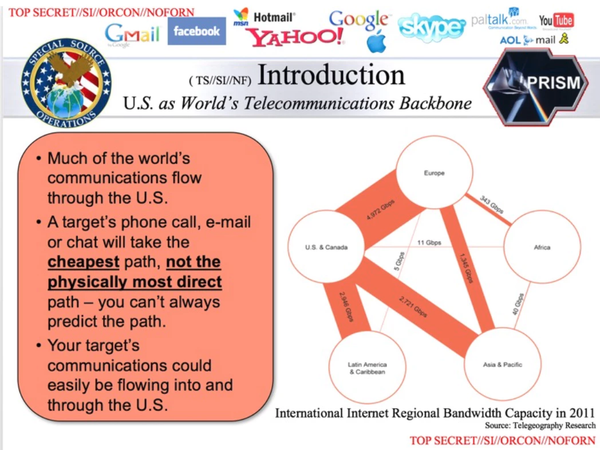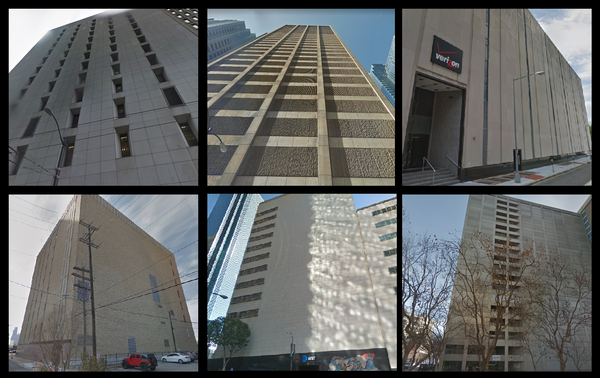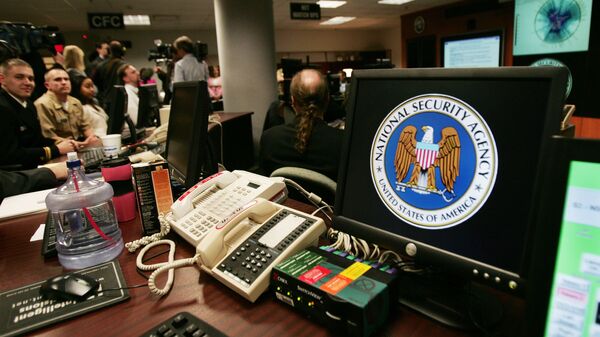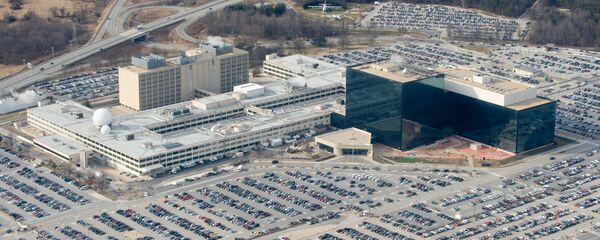The huge amounts of the NSA's Data collection comes from "peering" sites, which are used to process data from AT&T customers and also often serve as a midpoint for data generated from other companies because they're often a more direct or more cost-effective route. Due to the pervasiveness of US telecom infrastructure, huge amounts of global traffic makes its way in through US borders. Meanwhile, AT&T runs 19,500 "points of presence" in 149 countries.

These "peering" sites enable the NSA to collect "not only AT&T's data, they get all the data that's interchanged between AT&T's network and other companies," Mark Klein, a former AT&T line technician at the company's San Francisco office, told the Intercept. Klein blew the whistle in 2006 on the NSA's installation of eavesdropping hardware in a room in its building in San Francisco.
The NSA's collaboration through the data-gathering program, codenamed FAIRVIEW, is reportedly confined to AT&T. However, some of the facilities used by AT&T are shared facilities that also provide services to other telecom firms like Verizon.
The eight sites, which are located in Washington, DC, Seattle, San Francisco, New York City, Los Angeles, Dallas, Chicago and Atlanta, form a "common backbone" through which a massive amount of jointly used data travels, the Intercept reported Monday.
Neither the NSA nor AT&T would confirm the Intercept's reporting, although a number of former AT&T employees did, and the spy agency praised the company for its "extremely willingness to help." The revelations come from documents exposing FAIRVIEW that were leaked to Intercept editor Glenn Greenwald by whistleblower Edward Snowden in May 2013.

In the documents, the spy agency said the company was even "aggressively involved" in supporting the data collection program. Under the FAIRVIEW program, both organizations worked hand-in-hand to create a communications ranking system that flags information and relays it to the government.
According to the spy agency, the program is a "cooperative effort" with a "partner [that] operates in the US, but has access to information that transits the nation and through its corporate relationships provide unique access to other telecoms and [internet service providers]."
Among the "unique aspects" clarifying the program's capabilities is "access to massive amounts of data," formerly secret NSA documents show.
The eight sites were developed under the guidance of an engineer by the name of Hossein Eslambolchi, a former chief technology officer at the company. He told The Intercept that the company had asked him to create the "largest internet protocol network in the world."
Filtering equipment is also installed on AT&T's networks to keep US citizens' data out of the government's hands, as it would be unconstitutional for the agency to review Americans' data without a warrant.
However, in 2005 under former President George W Bush's administration, the agency was caught doing just that, the New York Times reported. Bush signed an order in 2002 that gave the NSA sweeping powers to eavesdrop on phone calls of people inside the US as part of an effort to track "dirty numbers" linked to terrorist groups. Meanwhile, Section 702 of the Foreign Intelligence and Surveillance Act (FISA) allows the government to obtain Americans' records so long as it is "incidental" to the targeting of foreigners.
That's allowed the NSA's limited technology to soak up and store a vast amount of information. For instance, the database is designed to target "selectors," like a name, IP address or phone number that is included on an NSA target list. When it finds the mention of one, the NSA "will acquire a copy of the entire inbox," an NSA memo released by the Intercept states.





